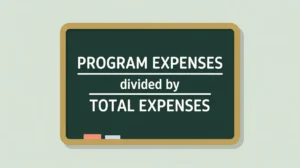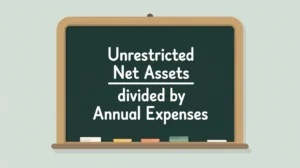Importance of Non-Current Assets
Non-current assets, also known as long-term assets, represent the resources a nonprofit uses over multiple years to sustain its mission and operations. These include property, equipment, and long-term investments that provide capacity, stability, and the infrastructure required to deliver programs. For nonprofits in social innovation and international development, non-current assets matter because they often determine whether an organization can scale effectively, manage complex projects, and sustain activities across diverse geographies. Donors and boards view these assets as signals of permanence and institutional strength, while funders may assess them to evaluate an organization’s long-term viability.
Definition and Features
Non-current assets are defined as resources expected to provide economic benefit for more than one year. They include tangible assets like property, plant, and equipment (PP&E); intangible assets such as software, licenses, or intellectual property; and long-term financial investments like endowments or bonds. Non-current assets are reported on the Statement of Financial Position after current assets and are subject to depreciation or amortization (except for land and certain investments). They differ from current assets, which are liquid and intended for near-term use, and from expenses, which are recognized as costs in the current period. Accounting standards require clear disclosure of asset valuation, depreciation methods, and restrictions.
How This Works in Practice
In practice, nonprofits acquire non-current assets to support program delivery and organizational infrastructure. For example, an international NGO may invest in vehicles for field operations, or a research institute may purchase specialized equipment. Finance teams record these assets at purchase price or fair value, then depreciate them systematically over their useful lives. Long-term investments, such as endowments, are managed to generate ongoing income for programs or operations. Nonprofits must also monitor and report impairments if the value of assets declines significantly. Proper stewardship ensures that long-term assets are maintained, used efficiently, and aligned with mission needs rather than tying up resources in underutilized infrastructure.
Implications for Social Innovation
For organizations engaged in social innovation and international development, non-current assets are strategic enablers of resilience and growth. They provide the physical and financial backbone required to implement large-scale initiatives, manage cross-border operations, and attract funders who value stability. At the same time, they require careful management to avoid creating rigid cost structures that reduce flexibility. Transparent reporting of non-current assets reduces information asymmetry by clarifying how an organization invests in capacity and infrastructure. Funders gain confidence that contributions are being stewarded to build long-term impact, while boards can evaluate whether asset holdings align with strategic priorities. By balancing investment in long-term assets with liquidity needs, nonprofits demonstrate both prudence and ambition in advancing sustainable social change.







